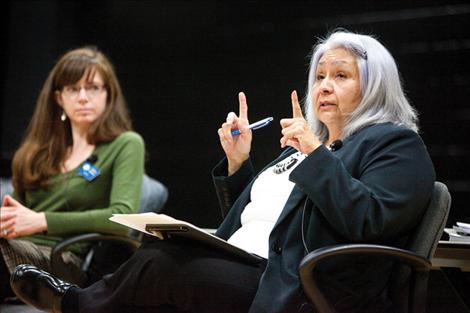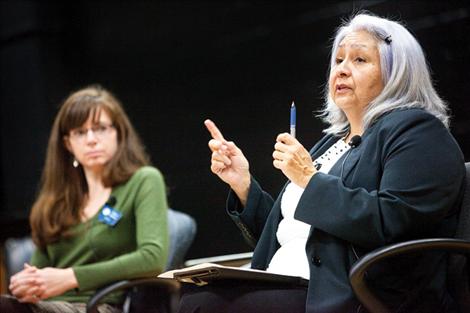Bipartisan group hears water compact details

Nicole Tavenner
Nicole Tavenner/Valley Journal People listen to a tribal and state attorney explain the proposed Confederated Salish and Kootenai Tribes Water Compact.

Nicole Tavenner
Tribal attorney Rhonda Swaney speaks about the proposed Confederated Salish and Kootenai Water Compact.

Nicole Tavenner
Audience members interact with attorneys giving a presentation about the proposed Confederated Salish and Kootenai Tribes Water Compact on Thursday night at Salish Kootenai College.

Nicole Tavenner

Nicole Tavenner

Nicole Tavenner

Nicole Tavenner

Nicole Tavenner

Nicole Tavenner

Nicole Tavenner

Nicole Tavenner

Nicole Tavenner

Nicole Tavenner

Nicole Tavenner

Nicole Tavenner

Nicole Tavenner

Nicole Tavenner

Nicole Tavenner

Nicole Tavenner

Nicole Tavenner
Issue Date: 2/4/2015
Last Updated: 2/4/2015 1:20:02 AM |
By
Megan Strickland
Keep Reading!
You’ve reached the limit of 3 free articles - but don’t let that stop you.















